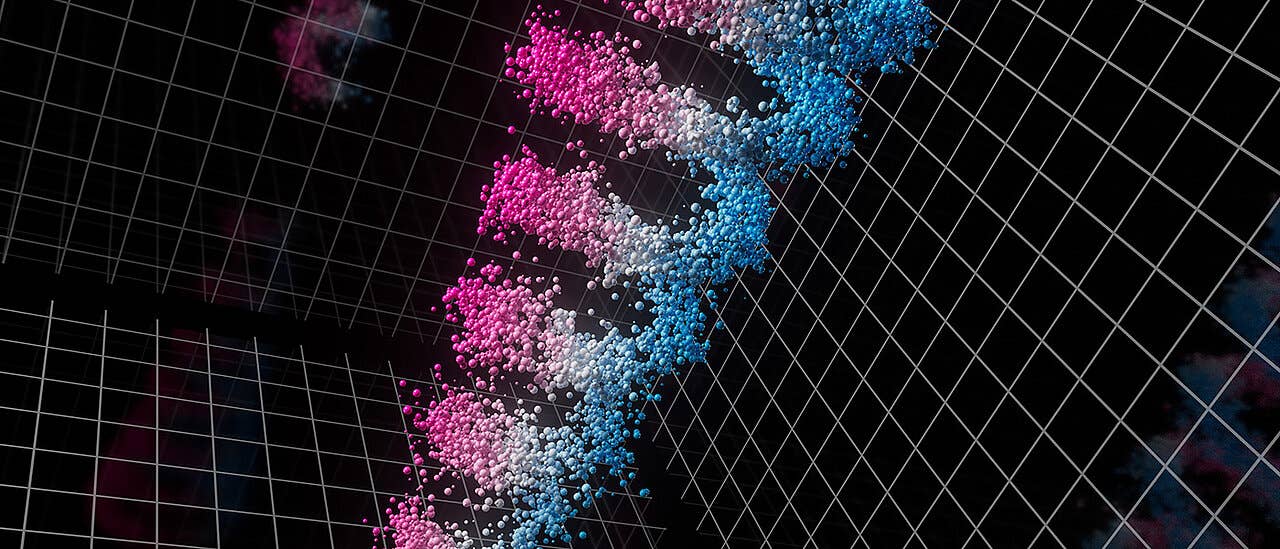Fecal transplants shown to reverse aging process
Transplanting fecal microbiota from young into old mice can reverse hallmarks of aging in the gut, eyes, and brain.

[May 5, 2022: Lisa Horton, University of East Anglia]
Transplanting fecal microbiota from young into old mice can reverse hallmarks of aging in the gut, eyes, and brain. (CREDIT: Creative Commons)
In the search for eternal youth, poo transplants may seem like an unlikely way to reverse the aging process.
However, scientists at the Quadram Institute and the University of East Anglia have provided evidence, from research in mice, that transplanting fecal microbiota from young into old mice can reverse hallmarks of aging in the gut, eyes, and brain.
In the reverse experiment, microbes from aged mice induced inflammation in the brain of young recipients and depleted a key protein required for normal vision.
These findings show that gut microbes play a role in the regulating some of the detrimental effects of aging and open up the possibility of gut microbe-based therapies to combat decline in later life.
Prof Simon Carding, from UEA’s Norwich Medical School and head of the Gut Microbes and Health Research Programme at the Quadram Institute, said: “This ground-breaking study provides tantalising evidence for the direct involvement of gut microbes in aging and the functional decline of brain function and vision and offers a potential solution in the form of gut microbe replacement therapy.”
Related Stories
It has been known for some time that the population of microbes that we carry around in our gut, collectively called the gut microbiota, is linked to health. Most diseases are associated with changes in the types and behaviour of bacteria, viruses, fungi and other microbes in an individual’s gut.
Some of these changes in microbiota composition happen as we age, adversely affecting metabolism and immunity, and this has been associated with age-related disorders including inflammatory bowel diseases, along with cardiovascular, autoimmune, metabolic and neurodegenerative disorders.
To better understand the effects of these changes in the microbiota in old age, scientists from the Quadram Institute transferred the gut microbes from aged mice into healthy young mice, and vice versa. They then looked at how this affected inflammatory hallmarks of aging in the gut, brain and eye, which suffer from declining function in later life.
The study, published in the journal Microbiome, found that the microbiota from old donors led to loss of integrity of the lining of the gut, allowing bacterial products to cross into the circulation, which results in triggering the immune system and inflammation in the brain and eyes.
Age-related chronic inflammation, known as inflammaging, has been associated with the activation of specific immune cells found in brain. These cells were also over-activated in the young mice who received aged microbiome transplants.
In the eye, the team also found specific proteins associated with retinal degeneration were elevated in the young mice receiving microbiota from old donors.
In old mice, these detrimental changes in the gut, eye and brain could be reversed by transplanting the gut microbiota from young mice.
In ongoing studies, the team are now working to understand how long these positive effects can last, and to identify the beneficial components of the young donor microbiota and how they impact on organs distant from the gut.
The microbiota of young mice, and the old mice who received young microbiota transplants were enriched in beneficial bacteria that have previously been associated with good health in both mice and humans.
The researchers have also analysed the products which these bacteria produce by breaking down elements of our diet. This has uncovered significant shifts in particular lipids (fats) and vitamin metabolism, which may be linked to the changes seen in inflammatory cells in the eye and brain.
Similar pathways exist in humans, and the human gut microbiota also changes significantly in later life, but the researchers caution about extrapolating their results directly to humans until similar studies in elderly humans can be performed.
A new facility for Microbiota Replacement Therapy (MRT), also known as Faecal Microbiota Transplantation (FMT) is being built in the Quadram Institute that will facilitate such trials, as well as other trials for microbiota-related conditions.
Lead author of the study, Dr Aimee Parker from the Quadram Institute said: “We were excited to find that by changing the gut microbiota of elderly individuals, we could rescue indicators of age-associated decline commonly seen in degenerative conditions of the eye and brain.
“Our results provide more evidence of the important links between microbes in the gut and healthy aging of tissues and organs around the body. We hope that our findings will contribute ultimately to understanding how we can manipulate our diet and our gut bacteria to maximize good health in later life.”
The research was funded by the Biotechnology and Biological Sciences Research Council, part of UK Research and Innovation.
‘Fecal microbiota transfer between young and aged mice reverses hallmarks of the aging gut, eye, and brain’ is published in the journal Microbiome.
Note: Materials provided above by University of East Anglia. Content may be edited for style and length.
Like these kind of feel good stories? Get the Brighter Side of News' newsletter.
Tags: #New_Discoveries, #Medical_News, #Microbiota, #Bacteria, #Aging, #Science, #Fecal_Matter, #Physiology, #Research, #The_Brighter_Side_of_News



